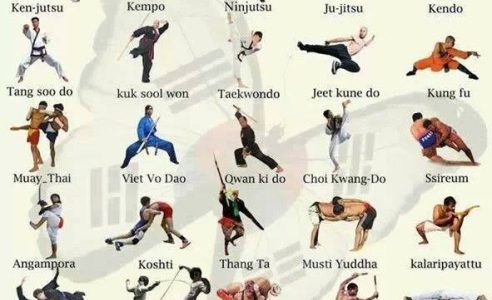Traditional Martial Arts And Modern Combat Sports: A Comprehensive Summary Of Their Distinct Differences
Traditional Martial Arts And Modern Combat Sports: A Comprehensive Summary Of Their Distinct Differences
Blog Article
Staff Author-Keith Fink
When you think about martial arts, do you lean more toward the conventional methods or the contemporary fight sporting activities? Each path supplies special advantages and experiences, shaped by their approaches and training techniques. Conventional martial arts highlight personal growth and self-control, while contemporary fight sporting activities focus on competitors and efficiency. Understanding these differences can direct you in selecting the appropriate strategy for your journey. But exactly how do these distinctions show up in training and approach?
The Ideology and History Behind Traditional Martial arts
While many people associate martial arts with physical combat, the ideology and background behind traditional martial arts run much deeper. kali martial art 'll locate that these techniques highlight personal development, technique, and regard.
Stemming from ancient practices, traditional martial arts were commonly developed for Self-Defense and spiritual development. They symbolize concepts such as equilibrium, harmony, and self-control, guiding specialists beyond mere combating abilities.
As you train, you'll not just learn strategies yet additionally acquire understandings right into the culture and values that shaped these arts. The rituals and customs, frequently passed down with generations, foster a feeling of area and belonging.
The Competitive Nature of Modern Fight Sports
Modern combat sports have changed the landscape of martial arts right into an extremely affordable field, where professional athletes take on in an examination of skill, method, and endurance.
You'll notice that competitions are usually arranged with rigorous guidelines and guidelines, making sure justice and security. These events draw in large target markets, sustaining the excitement and intensity of matches.
Athletes train carefully, not just for physical expertise however additionally for psychological durability, understanding that every information counts in the ring. The adrenaline rush during competitions is apparent, as fighters press their limitations to assert triumph.
Fans value the athleticism and virtuosity included, making modern combat sporting activities a thrilling phenomenon that continues to develop and astound enthusiasts worldwide.
Training Approaches and Strategies: A Comparative Evaluation
The affordable environment of contemporary fight sports needs innovative training methods that differ considerably from conventional martial arts.
In https://www.timesunion.com/living/article/Wielding-swords-to-preserve-medieval-martial-arts-17486135.php -day training, you'll focus on certain techniques, sparring, and conditioning, typically utilizing drills that simulate real battle situations. You'll see a focus on quantifiable efficiency and frequent competition to examine your skills.
On https://charlietzeio.yomoblog.com/42194672/advantages-for-the-mind-and-emotions-from-taking-part-in-martial-arts , traditional martial arts prioritize forms, katas, and thoughtful mentors, often emphasizing self-control and regard over competitors.
Training is usually much less extreme and may entail repeated technique instead of real-time sparring.
While both methods develop skill and physical fitness, contemporary fight sports provide a much more vibrant and adaptable training atmosphere, preparing you for prompt obstacles in the ring or cage.
Pick the course that straightens with your objectives and rate of interests.
Conclusion
In picking in between typical martial arts and modern-day combat sporting activities, it truly comes down to what you value the majority of. If you're searching for personal development, technique, and a feeling of community, standard arts might be your best fit. Yet if you grow on competition and real-time challenges, contemporary battle sports could be the means to go. Inevitably, both paths offer one-of-a-kind benefits, so it's everything about straightening your training with your individual objectives and rate of interests.
